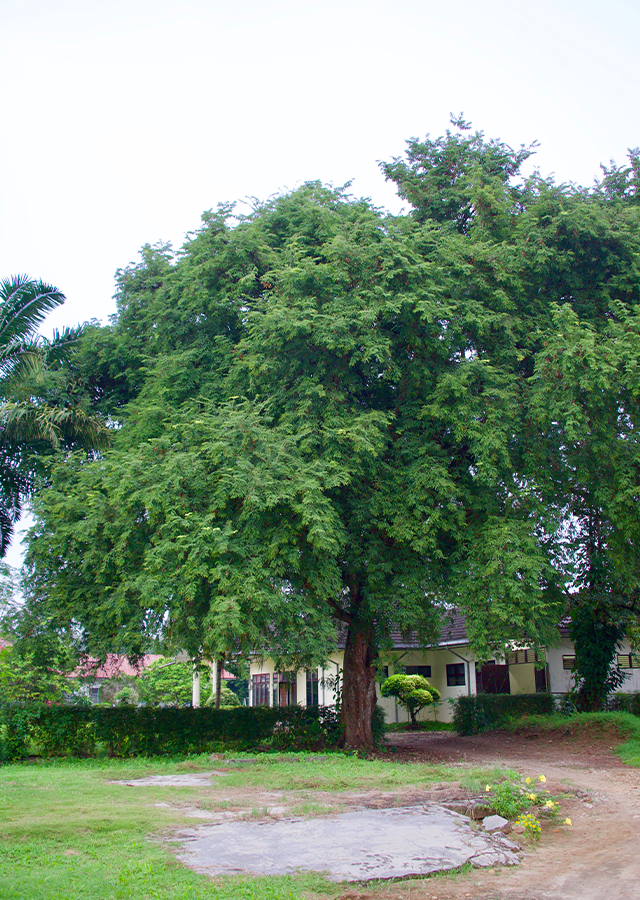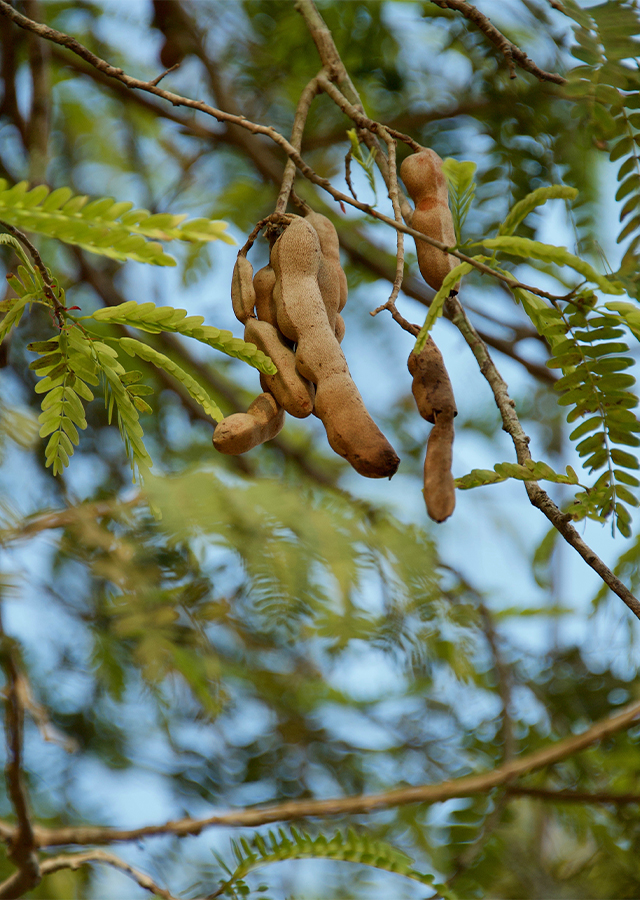Traditional Herbs from Tamarindus indica
smooth_skin
- Take 20 g of tamarind fruit, 100 g of black pulut (sticky rice), enough water\u00a0\u00a0\u00a0\u00a0
- Pure black pulut with a blender, add tamarind and enough water, mix well until the texture is thick for a body scrub
- Use as a body scrub when bathing, spread evenly all over the body, leave to scrub for a little dry, then rub the scrub
- After finishing, rinse with water then continue showering as usual, to produce healthy and bright skin, the scrub can be used once a week.
What is Tamarindus indica Looks like??



Parts of Tamarindus indica that could be used
- Leaves", "Bark", "Flowers", "Fruit", "Roots", "Twigs", "Stem
Tamarindus indica Distribution
Its origin is thought to be from the East African Savanna where the wild type is found, one of which is in Sudan. For thousands of years, this plant has roamed to Tropical Asia then to the Caribbean and Latin America, including Indonesia. Usually used as a spice mixture (sour flavor enhancer) in cooking and herbal medicine mixtures.Agroecology of Tamarindus indica
Tropical plants, always green (do not experience leaf fall). Grows well to a height of around 1,000-1,500 m above sea level, on sandy or clay soil, especially in areas where the dry season is quite long.
Morphology of Tamarindus indica
- Taproot.
- Stem up to 2 m in diameter, base, skin greyish brown, rough and broken, with vertical grooves. The crown is leafy and densely leafy, wide and rounded.
- The compound leaves are even pinnate, 5-13 cm long, flat-edged, green. The leaves will fall before the flower comes out.
- The flowers are yellowish, arranged in loose bunches and grow in the axils leaves or at the ends of twigs.
- The fruit is a bulging pod, almost cylindrical, the fruit skin (exocarp) is hard brownish, the flesh (mesocarp) is greenish white (young) and brownish red (old).
- Blackish brown seeds, shiny and hard, slightly square in shape.
Cultivation of Tamarindus indica
Propagation by seeds and stem cuttings. Propagation results are planted with a spacing of 8-10 m and at the beginning of the rainy season.
Tamarindus indica, more details :
Chemical Content of Tamarindus indicaTannins, saponins, steroids, flavonoids, alkaloids, β-sitosterol, cycloartanol, limonene, malic acid, longifolene, crytopinone, tartaric acid.
Benefits of Tamarindus indica
Medicine for canker sores, reduces inflammation and pain in joints, medicine for coughs, fever, diarrhea, asthma, wounds and boils, increases appetite, softens the skin.
Simplisia of Tamarindus indica
- Remove the tamarind seeds then wash thoroughly with running water and drain.
- Weigh 1 kg and dry using parchment paper in a drying cupboard at 40\u00b0C until dry.
- Weigh again and puree with Blend until it becomes a coarse powder (simplisia) and place in a closed container.
Another Facts for Tamarindus indica :
Synonym of Tamarindus indicaCavaraea elegans Speg., Tamarindus erythraeus Mattei, Tamarindus occidentalis Gaertn.�
Habitus of Tamarindus indica
Tree. Annual tree, up to 30 m high
Habitat of Tamarindus indica
- Riverside", "Forest", "Grassland
No comments:
Post a Comment